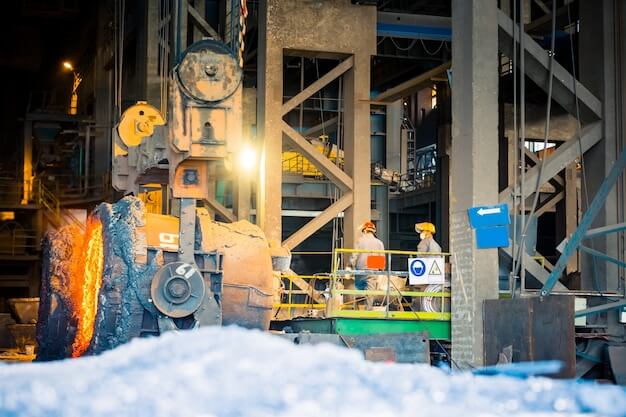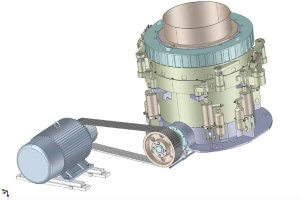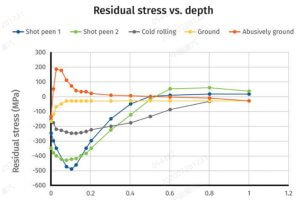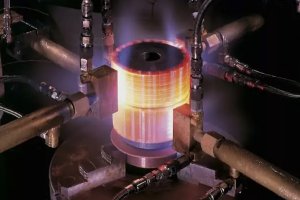Introduction to Carbon Fiber and Fiberglass
In the world of synthetic materials, carbon fiber and fiberglass are two distinct but essential elements which have become indispensable across various industries. Carbon fiber is a high-strength material made from thin strands of crystalline filaments that significantly reduce weight while maintaining strength. It excels in situations where lightness, durability, rigidity, and resistance to deformation are concerned. However, it comes with a higher cost.
Fiberglass, on the other hand, consists of fine fibers of glass embedded into various resins. This economical material offers an impressive blend of strength, flexibility, and corrosion resistance. Both these materials are invaluable for applications ranging from aerospace, automotive, sports equipment, building construction, and beyond because they offer unique benefits depending on their intended application. A comparative understanding of both helps select an ideal option for specific projects based on factors such as strength requirement, budget restraints, and so on.
Understanding Carbon Fiber: Components, Manufacturing, and Strength
Carbon fiber stands out in the world of materials for its exceptional strength-to-weight ratio and stiffness. This section delves into the components that make up carbon fiber, the manufacturing process, and the inherent strength that makes it a preferred choice in various industries, including aerospace and automotive. For those interested in exploring the potential of carbon fiber in manufacturing, our 3D Printing Services offer a gateway to innovative solutions.
Components of Carbon Fiber
Carbon fiber is composed of thin, strong crystalline filaments of carbon that are used to strengthen material. Carbon fibers are produced by using a precursor such as polyacrylonitrile (PAN), pitch, or rayon. The material is then carbonized at high temperatures in an inert atmosphere to remove non-carbon atoms, resulting in a high strength-to-weight ratio and stiffness.
Manufacturing Process
- Precursor Stabilization: The precursor material is oxidized at low temperatures to stabilize the bonds, preparing it for carbonization.
- Carbonization: The stabilized material is heated to very high temperatures in an inert atmosphere, causing the non-carbon atoms to vaporize, leaving behind a high concentration of carbon fibers.
- Surface Treatment: To improve the bonding properties, the surface of the carbon fibers is treated with various chemicals.
- Sizing: A protective coating is applied to the fibers to prevent damage during winding or weaving.
Strength of Carbon Fiber
Carbon fiber’s strength is derived from its unique microstructure, with the carbon atoms arranged in long chains that are tightly bound together. This arrangement provides exceptional tensile strength, making carbon fiber materials significantly stronger than steel at a fraction of the weight. Additionally, carbon fiber exhibits excellent stiffness, resistance to heat, and chemical resistance, making it an ideal material for high-performance applications.
In conclusion, carbon fiber’s unique properties, including its manufacturing process and strength, make it a highly sought-after material in industries requiring high strength-to-weight ratios and stiffness. Through services like 3D printing, the potential applications of carbon fiber continue to expand, offering new opportunities for innovation in product design and manufacturing.
Understanding Fiberglass
Fiberglass is a composite material that comprises glass fibers suspended in a resin matrix. Its fabrication process usually starts with the pulling of narrow strands of silica-based or other formulations of glass from molten masses, and these are then woven together into a flexible framework. The framework undergoes impregnation via liquid polymer resins such as epoxy or polyester, followed by a curing phase under controlled temperature and pressure conditions to create the final rigid structure.
The significant strengths of fiberglass reside primarily in its versatility, low cost, and overall performance characteristics. For instance, it displays considerable durability compared to traditional materials like wood, metal, or brick, due mainly to its inherent corrosion-resistant properties and high strength-to-weight ratio. Additionally, “fiberglass retains dimensional stability even when exposed to harsh outdoor weather conditions”, making it an excellent choice for applications ranging from vehicle body parts, watercraft hulls, telecom enclosures, to roofing materials.
Comparing Strength: Carbon Fiber vs Fiberglass
When it comes to a factual comparison of tensile strength, evidence clearly shows that carbon fiber stands superior. For instance, typical carbon fibers have a tensile strength of 500,000 psi, while glass fibers can only muster about 350,000 psi. This difference significantly impacts the toughness or durability of each material; carbon fiber’s high stress resistance means it can handle more tension before failing. On the other hand, fiberglass tends to be less resilient under pressure and can break or fracture more easily. This disparity in performance is primarily because of carbon fiber’s stronger atomic structure than its fiberglass counterpart.
- Tensile Strength: Carbon Fiber- 500,000 psi, Fiberglass- 350,000 psi.
- Durability: Because of its extraordinary tensile strength, carbon fiber retains its shape and structural integrity even when subjected to severe stresses which bestows upon it an enhanced durability as compared to fiberglass.
The conclusive argument based on these points unmistakably designates carbon fiber as the stronger choice between the two materials owing to its notable differences in both tensile strength and durability.
Analyzing Cost: Carbon Fiber vs Fiberglass
Understanding the cost implications of both carbon fiber and fiberglass is crucial when considering their usability. To begin with, producing carbon fiber is an intricately complex process that encompasses polyacrylonitrile (PAN) precursor manufacture, oxidation, carbonization, and surface treatment, among other stages. The complexity and energy intensity of this process, coupled with the expenditure on raw materials such as PAN and hydrocarbon gases, render carbon fiber a relatively costly material.
Fiberglass, on the other hand, has less involved production processes, mainly encompassing the melting of silica or sand at high temperatures to form glass, which is then drawn into fibers. Consequently, the economic factors associated with creating fiberglass are significantly lower. Its main costs arise from raw materials – primarily silica, energy for heating, equipment maintenance, and labor.
In comparison, the overall cost of producing fiberglass can be substantially lower than that of manufacturing carbon fiber, making it a more budget-friendly material. Despite its strength advantages, the higher costs of carbon fiber may make it a limiting factor depending upon specific applications and project budgets.
Broad Applications of Carbon Fiber and Fiberglass
Carbon fiber’s extensive applications range from automotive engineering to sporting goods, owing largely to its superior strength-to-weight ratio. When produced as a composite material, it offers exceptional rigidity making it suitable for the production of airplane parts, race cars, and professional bicycles among others.
- Aerospace: In aircraft structures due to its high strength, reduced weight, and resistance to corrosion.
- Automotive: Employed in manufacturing car bodies because it is lighter and stronger than most metal alloys.
- Sporting goods: Utilized in making bike frames, tennis rackets, etc., due to its lightness and durability.
Fiberglass, on the other hand, has widespread usage across numerous industries such as construction, marine, and electrical due to its cost effectiveness and versatility.
- Construction: Used for insulation purposes in walls and ceilings, doors, windows, and roofing materials given its thermal properties and non-flammability.
- Marine: Incorporated into boat structures due to its water-resistant characteristic.
- Electrical: Fabricated for circuit boards because of its electrical insulating properties.
In a side-by-side comparison, carbon fiber leads in sectors where high performance and light weight are critical while fiberglass prevails where costs are monitored, though the functionality might be less demanding.
Final Comparison: Choosing Between Carbon Fiber and Fiberglass
In making the decision between carbon fiber and fiberglass, several factors come into play. Principally, these are strength, cost, and specific application needs. To recapitulate, Carbon fiber takes the upper hand in terms of strength, it is known to have superior tensile strength compared to fiberglass. However, this high strength factor comes with a higher price tag which makes fiberglass more appealing in economic lenses as it provides a decent strength at an invitingly reduced cost.
- Strength: Carbon Fiber boasts significantly greater strength than Fiberglass.
- Cost: Fiberglass triumphs over Carbon Fiber regarding affordability.
- Application: Both materials can be widely applied in diverse scenarios. But for projects requiring exceptional durability like automotive and aerospace, Carbon Fiber might make the wiser choice; meanwhile, for less demanding applications where budget is taken into consideration, Fiberglass could be the go-to option.
In conclusion, both materials maintain their popularity within different sectors for valid reasons. The decisive point should lean toward which properties are prioritized as per the individual requirements of the project undertaken.
Other Articles You Might Enjoy
- Carbon Fiber vs. Fiberglass: Strength, Cost, and Application Showdown
Introduction of Carbon Fiber and Fiberglass In the world of composites, Carbon Fiber and Fiberglass hold significant places due to their unique characteristics. Originally discovered in 1860, carbon fiber is…
- Understanding Bead Blasting in CNC Machining(compressive strength Otto)
Bead blasting is a process appended to Computer Numerical Control (CNC) machining used prominently for surface finishing. It gives the products a clean and appealing look by eliminating tool marks…
- Using Acrylic in CNC Machining: Does It Offer Clear Advantages?
Introduction to CNC Machining and Acrylic CNC machining, an abbreviation for Computer Numerical Control, is a process utilized broadly in manufacturing where pre-programmed computer software directs the movement of factory…









